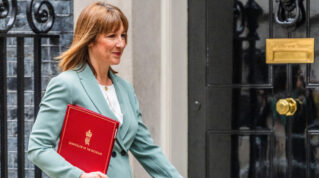The government should re-create an emergency fund to top up schools’ contributions to teachers’ pensions, leaders have said, amid warnings they face making cuts in the face of a grant shortfall.
Last year, the government announced employer contributions to the teachers’ pension scheme would rise by more than 20 per cent this April from 23.6 to 28.6 per cent.
Ministers said they would cover the rise for state schools with £1.1 billion in additional funding.
But Schools Week revealed in March how some schools feared they would be short-changed in their grant allocations, despite the government’s pledge to fully fund it.
Today, the general secretaries of the ASCL and NAHT school leadership unions have written to education secretary Gillian Keegan to say they are “extremely concerned” about the reported shortfalls.
The grant is calculated based on funding rates for pupils of different ages, with an extra £65 to £100 for each pupil eligible for free school meals.
Speaking in March, leaders said they believed it was this weighting on free school meals that is skewing the allocations in favour of more deprived schools.
Schools locked in ‘spiral of cuts’

In their letter, Pepe Di’Iasio and Paul Whiteman warned schools were “currently locked in a downward spiral of underfunding and cuts.
“We fear that despite the best efforts of school and college leaders to minimise the impact on pupils and students, it is inevitable that educational provision will suffer.”
Full school-level allocations for 2024–25 have not yet been published, but the Department for Education has provided a calculator tool online for schools and trusts to work out what they will receive.
Union leaders said based on the calculator, “we have heard from a number of members that there is a shortfall. This is often substantial”.

“Examples from across the sector have included amounts of £70,000 or more. For those in special schools, where higher staffing ratios are required, this is likely to be even more substantial.”
They said they were “extremely concerned about the impact these shortfalls will have, given that these are occurring in the context of substantial cost pressures in schools more widely”.
“This includes a nationally agreed salary rise for support staff in 2023-24 which schools do not have funding to deliver, and the inadequacy of funding for special educational needs provision.
“The result is that many schools are setting in-year deficits and will have to make further cuts in order to balance their budgets in future years.”
Re-establish ‘supplementary fund’
The two unions have raised the matter with Keegan and officials, and have been told to “encourage our members to contact the department directly with information about the shortfalls they are experiencing”, they said.
However, this “does not seem to be a solution to this issue, albeit a helpful gesture”.
When a grant to cover an increase to employer contributions in 2019, the DfE “also provided the option for schools to apply to a supplementary fund”.
Schools were eligible “if their grant allocation falls short of their actual pension cost increase by more than 0.05% of their overall budget for the period”, withdrawn government guidance stated.
“This was an extremely welcome solution and we now urge the department to introduce this option alongside the [2023-24 pension grant], as a matter of urgency,” said Di’Iasio and Whiteman.
The impact of the pension increases is “of course just one example of the ongoing budget pressures the sector is grappling with”.
“We ask that you continue to represent to the Treasury and the Cabinet the seriousness of the financial situation facing schools, trusts and colleges, and the necessity of additional funding as a matter of urgency.”
















Perhaps a serious conversation about binning off this unnecessary layer of exec level jobs in all trusts – who have in reality become a ridiculously expensive alternative to the abandoned LEAs – with a need for independent oversight over the accounts and questions the need for such overpaid personnel who CAN teach but choose not to teach during what is the biggest teacher recruitment and retention crisis the profession has ever seen.